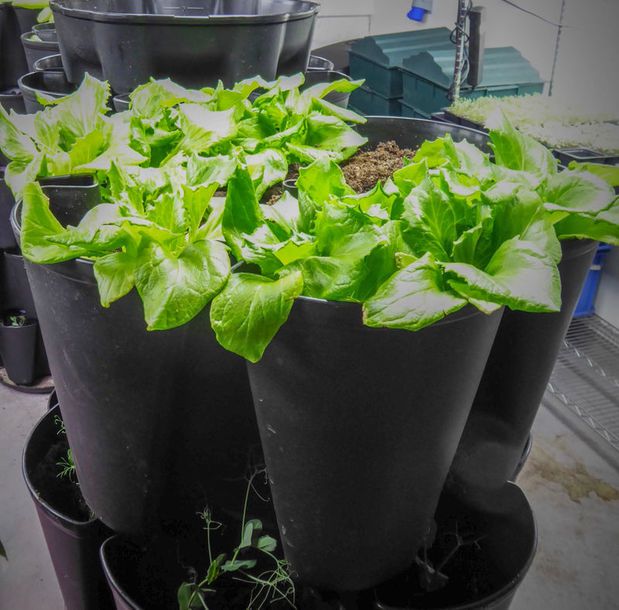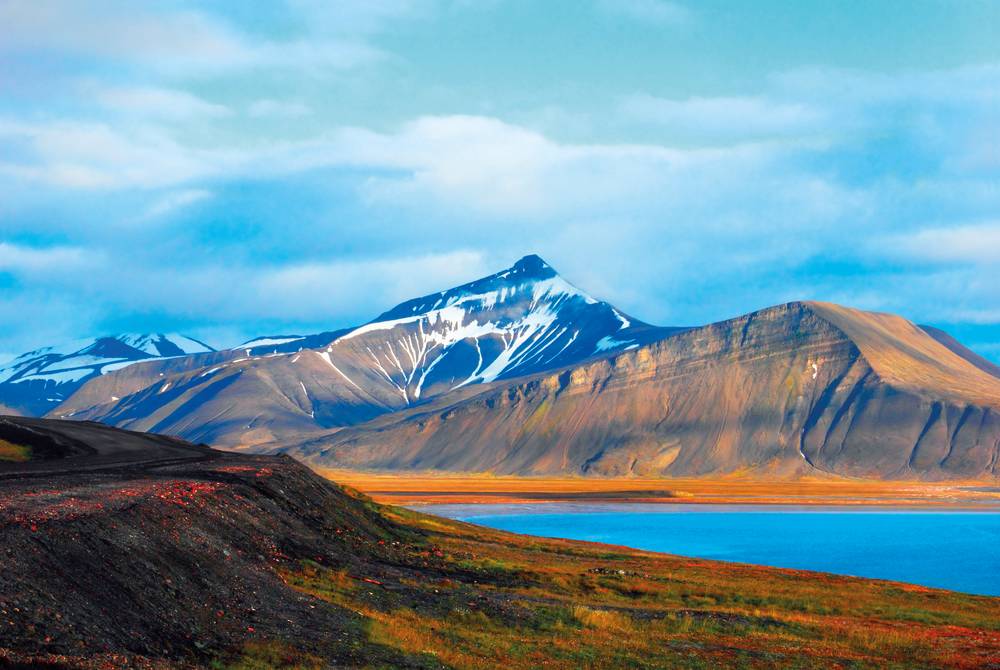Experience a wilderness like no other on a holiday to Svalbard.
When you land and walk out onto the airport tarmac, it’s the cold that hits you first – no surprise, really, as that’s what you’ve been waiting for, wondering exactly what it would be like. After that, it’s the dryness, as the Arctic air seems to freeze any moisture in the nose, mouth and throat.
The airport is almost surprisingly unremarkable, not the crumbling ruin of an end-of-the-world outpost, but a thoroughly efficient, friendly local pit stop. A drive through the deep dark of 3:00 AM briefly illuminates rows of snow-crusted boats that haven’t seen the sea in five months, illuminated domestic interiors on display through plate glass windows and the occasional shadowy wooden structure, too stout to be an oil rig and made of wood (later, you’ll learn there are the old winches for removing coal from the mines).
This is Longyearbyen. This is Svalbard. This is 78 degrees latitude, and the edge of the known universe.

It may look like a painting, but the twilight of a Svalbard winter makes photographing even the immense Longyear Glacier difficult.
It’s hard to know which to expect – a high-tech society necessary for survival on a moon-like terrain, or a pure wilderness, untouched because of its sheer overwhelming might. What keeps surprising the unaccustomed brain is that, depending on the day and the activity, you might find either. For example, the fact that in the dead of January, in minus 20 degrees, one can find microgreens on one’s roast lamb supper in the cosy, heated hotel. However, those greens cost 500 NOK, or £50, per tray, and are grown in the only greenhouse of the entire vast archipelago – a pink geodesic dome handmade in 2014 by a father and son; up close you see it’s little more than plastic sheeting and rope lights. And the cosy heating indoors? All powered by coal, which in another intellectual backflip, is actually the most environmentally friendly energy source up here.

Salad greens growing in Svalbard's only plant nursery
It’s hard to get out of town – ‘town’ being the Norwegian settlement of Longyearbyen, on the Isfjord, at 2,500 people the largest permanently inhabited settlement in all the islands. To put things into perspective, Barentsburg, the Russian outpost to the southwest, has 470 residents and takes nine hours to reach by snowmobile. There are no roads here. Once you leave the populated area, a member of your party must have a rifle and be trained in its use, in case a polar bear gets too curious and close for comfort. Unwary – and simply foolhardy – visitors have accidentally lured the animals with poorly-secured food reserves while trekking, picked beach camping spots where bears hunt, and made a number of other careless mistakes over the years, and this in a place where all the residents respect the land as stewards and guests. Any polar bear death is reported to the governor for investigation, and though self-defence shooting is legal, dishonest poachers are kept in line by the illegality of trophies.

A sign at the edge of Longyearbyen reminding travellers – particularly in the winter darkness – to guard against polar bears.
It’s an international community, a hub for scientific research including geology, biology and astronomy (in the dark season, when there in continual nighttime from October to February, there is nowhere better on Earth to see the Northern Lights), and you may well encounter a tour guide with a masters in astrophysics who can also fix a broken snowmobile that has flipped on the ice in near-total darkness.
This is the ‘Svalbard virus’ at work, the clean cold air reinvigorating visitors who meant to stay a month or a year but now can’t imagine leaving, who were once fashion pattern-cutters in London or gap-year nomads from Australia but fell in love with the rose light that kisses the mountaintops in spring and the reindeer that dopily block what little traffic exists. Even during twentieth-century political tensions, the Russian and Norwegian communities here got along, out of the necessity that being neighbours in the remote Arctic engenders.

Longyearbyen in summer, Svalbard
The Global Seed Vault is here, a bank where every country in the world can store back-up copies of their plant life in a frozen tunnel dug deeply into a mountainside. This peace project is emblematic of the Svalbardian attitude of cooperation and optimism, and care for the future of the environment. The bank has recently seen its first withdrawal – from Syria, whose people will plant seeds in Morocco and Lebanon to produce more seeds to store for the day their dark war ends. A sad necessity – but a signal that there can be hope, and help.
Compared to Longyearbyen, every small town on Earth begins to feel like a metropolis; mountains elsewhere feel like poor imitations of Svalbard’s aloof, white peaks. The air is cold, sometimes punishingly so, and the dress code is uniformly practical and unfussy. A beach holiday it’s not, but the adventure of a lifetime, high in the reaches of the Arctic, it most certainly is.
Inspired? Explore our range of Svalbard holidays




